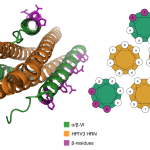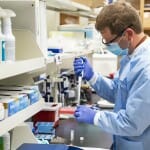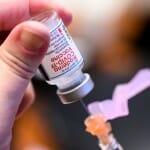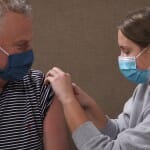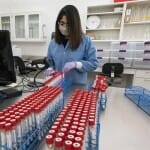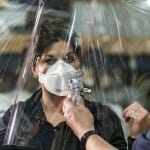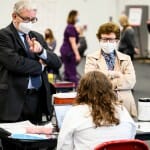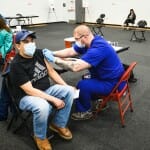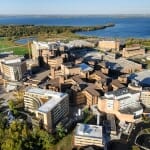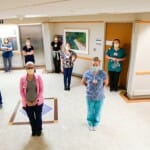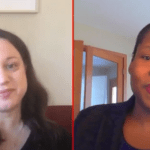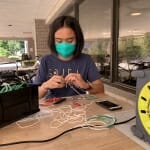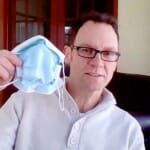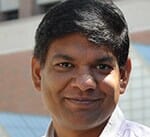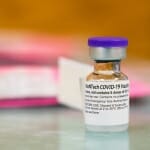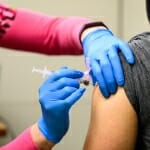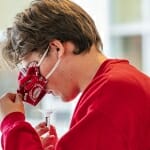Tag Health & medicine
Scientists develop better way to block viruses that cause childhood respiratory infections
While the approach hasn’t yet been tested in humans and researchers must further refine and test the system, it does provide a new strategy for potentially preventing or treating these common infections.
Health tool significantly reduces medication over-prescription, improving patient safety
A new study from a team of researchers at the University of Wisconsin–Madison has found that the e-prescribing tool CancelRx more than doubled the proportion of successfully discontinued medications, from 34 percent to 93 percent, at UW Health, a major health system in Wisconsin.
Disrupted biochemical pathway in the brain linked to bipolar disorder
The results offer a foundation for research into treating the often-overlooked cognitive impairments of bipolar disorder, such as memory loss, and add to a growing understanding of how the biochemistry of the brain affects health and disease.
Badger Talks video: Follow vaccine etiquette
Vaccines provide hope that the worst of the pandemic will soon be behind us, but they also can lead to some tricky conversations. In this week’s Badger Talks video, vaccine etiquette is discussed.
UW-Madison nursing students volunteer to give out vaccine
"Being able to contribute to warding off this disease is so empowering and rewarding, and it just makes me feel like all this suffering all of us have been experiencing is moving toward a resolution," said nursing student Kayla Van Boxtel.
Wisconsin Veterinary Diagnostic Lab serves on front lines of COVID testing and response
The lab has performed nearly 200,000 COVID-19 tests on the UW–Madison campus while also playing a key role handling a COVID-19 outbreak among Wisconsin’s mink industry.
WisCon helps small businesses through COVID-19 pandemic
The WisCon consultants have dedicated time this year to COVID-19 consulting and training for small businesses, which includes virtual assessments of facilities, recommendations for controlling employee exposure, and video training on COVID-19 prevention and control.
UW System leaders, Chancellor Blank visit UW–Madison COVID-19 vaccine site
The number of people in the UW–Madison community who have reported receiving at least one dose of the vaccine, whether on campus or off, now exceeds 10,000.
Enthusiasm on campus as more students, employees get vaccinated against COVID-19
Nearly 10,000 students and employees have received at least one shot of either a two-dose or one-dose vaccine, both at UHS and reported off campus.
Stories of life-changing treatment at UW Health
One patient was the first in Wisconsin to receive a double-lung transplant after COVID-19. Another had a brain tumor successfully removed after a poor prognosis.
UW Health’s healthcare heroes have stepped up
Their roles range from administering tests to caring for patients to ramping up telehealth, and they've worked long hours to help all of us through this difficult time.
Badger Talks: Disparities in COVID vaccination
“I think the disparities in vaccination are a reflection of the underlying disparities that drive Covid-related mobidity and mortality in the first place."
CDC recommends fitters like Badger Seal, giving it boost
The team of UW–Madison engineers developed a simple and inexpensive do-it-yourself fitter that ensures a tighter mask seal around the wearer’s nose, mouth and face, as masks can leave gaps that could allow virus particles to escape.
Badger Talks video: The right type of mask
In this Badger Talks interview, mechanical engineering professor Scott Sanders talks through some of the mask-fitting guidance.
Fixing genetic mistakes to restore vision
The project, funded by a five-year, $7.7 million award from the National Institutes of Health National Eye Institute, will rely on an approach aimed at correcting nonsense mutations in DNA.
COVID questions: Is vaccine approved? What to expect afterward?
With thousands of Wisconsinites vaccinated and many thousands to come in the latest group recently announced for vaccination, there are five things people should know once vaccinated.
Meet the people who make Safer Badgers work, part 2
It’s a big job to help keep campus safe through the pandemic. As part of UW–Madison’s Safer Badgers effort, people are needed to answer questions over phone and email, staff the testing sites, support the app, manage building access and more.
UW-Madison to begin vaccinating members of campus community aged 65 and older
University Health Services has sent notices to about 1,800 members of the campus community from this group to invite them to make appointments to be vaccinated.
Answers to this week’s top Safer Badgers/COVID-19 questions (week 2)
Here are some of the top questions (and answers) from the Frequently Asked Questions we have compiled about Safer Badgers and spring COVID-19 requirements.

